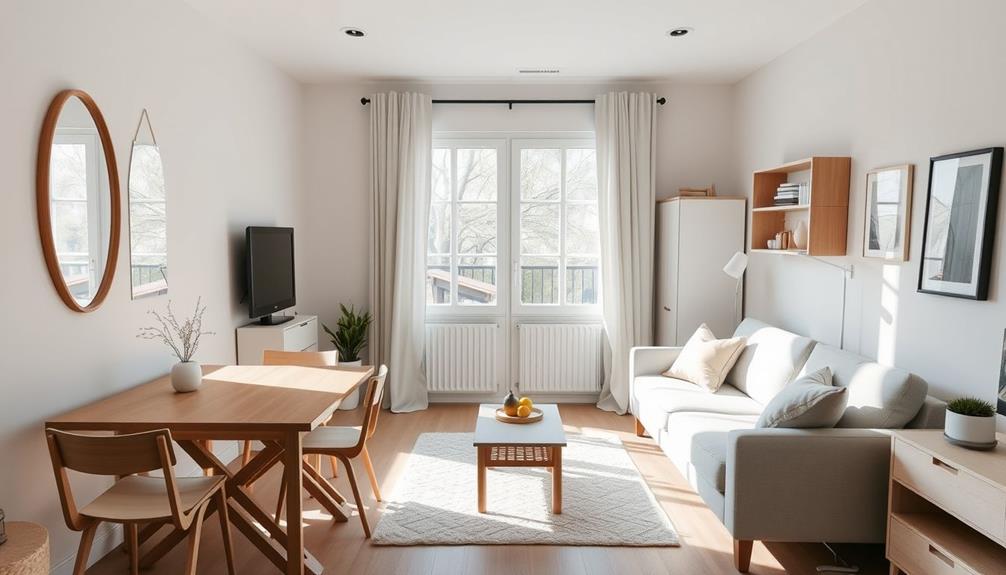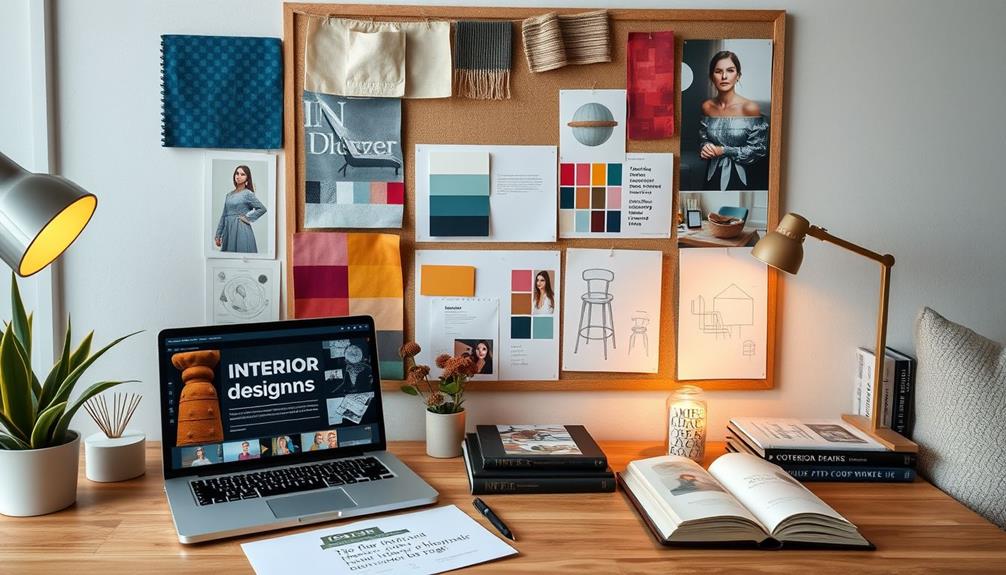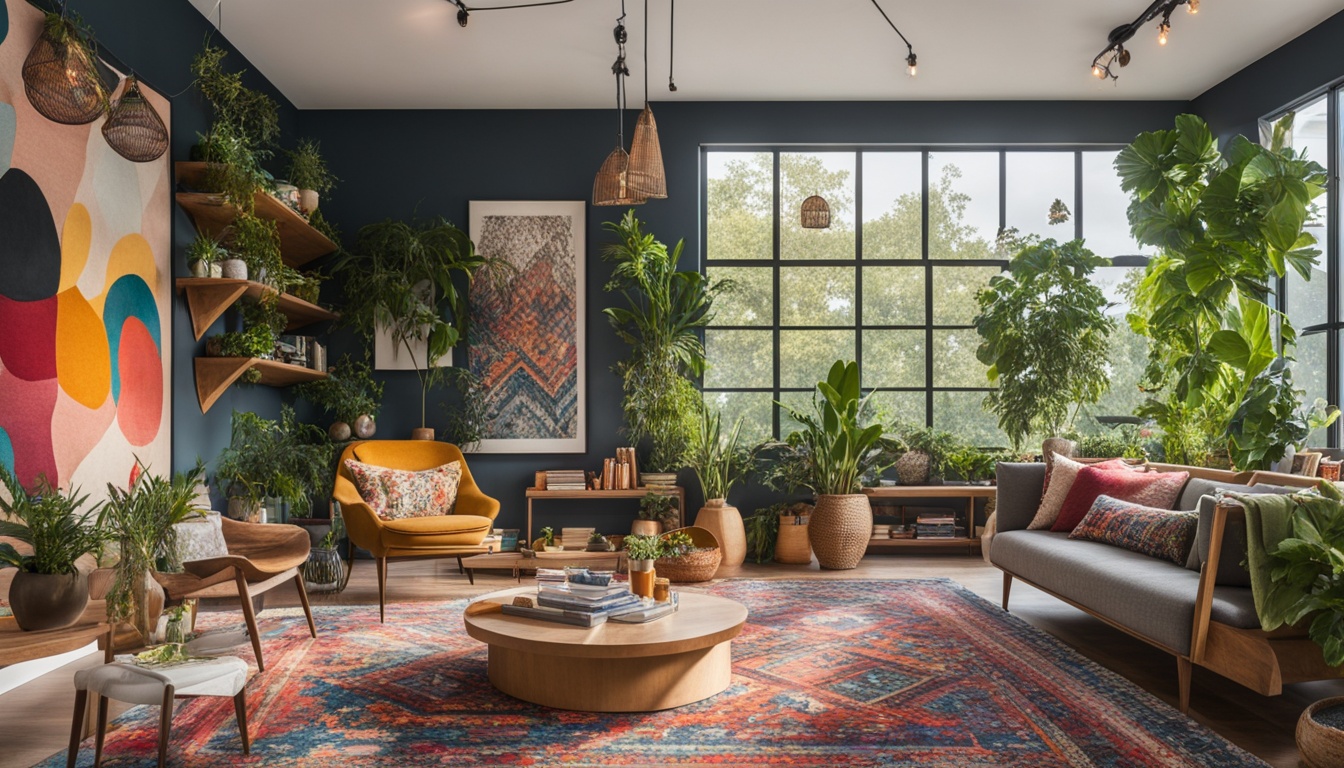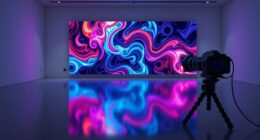To get good at interior design, start by mastering fundamental principles like balance, harmony, and scale. Experiment with color theory and mix textures to bring your spaces to life. Don't forget to focus on functionality; multi-functional furniture and clever storage solutions can make all the difference. Inject your personal style through unique decor and meaningful items. Finally, embrace continuous learning by attending workshops, taking on small projects, and following inspiring designers. Stay curious, and you'll find plenty more techniques and tips waiting to enhance your design journey. As you continue to hone your skills and absorb new knowledge, you’ll find yourself constantly improving your home’s interior design. Keep pushing your creative boundaries and don’t be afraid to take risks – after all, that’s how innovative design ideas are born. With dedication and passion, you’ll soon be able to transform any space into a stunning masterpiece that reflects your unique vision and personality.
Key Takeaways
- Attend workshops and online courses to enhance your understanding of design principles and stay updated on current trends.
- Practice through small design projects to apply your knowledge and develop your unique style over time.
- Create a cohesive color palette that resonates with your personal preferences while complementing existing decor.
- Experiment with layering different textures and patterns to add depth and visual interest to your spaces.
- Maintain a design journal to document ideas, inspirations, and reflections for continuous improvement in your design skills.
Understanding Design Principles
When diving into interior design, understanding design principles is vital to transforming spaces effectively. You'll want to familiarize yourself with fundamental concepts like balance, harmony, and scale.
Balance guarantees that visual weight is distributed evenly, creating a sense of stability. Whether you're working with symmetry or asymmetry, achieving balance can greatly influence your space's cohesiveness.
Harmony ties all elements together, so every piece you choose complements the others. This is where understanding color comes in. Different colors evoke various emotions and atmospheres, so knowing how to use them can considerably impact your design.
Scale is another essential principle; it's about making sure your furniture and decor fit harmoniously within the space. When you select items that are proportional to the room, you create a more inviting environment.
Additionally, don't forget about texture. Layering different textures adds depth and visual interest, making your designs more dynamic.
Exploring Color and Texture

Exploring color and texture can dramatically elevate your interior design projects. A well-thought-out approach to color and pattern, combined with different textures, can transform any space.
Start by considering how these elements affect your room feel. Here are three key aspects to focus on:
1. Color Theory: Utilize complementary colors for vibrant contrasts or analogous colors for a harmonious look. Your paint color should reflect the mood you want to create.
Consider incorporating earthy tones to align with the latest modern farmhouse decor trends for a warm and inviting atmosphere.
2. Cohesive Color Palette: Select a cohesive color palette based on dominant hues from your artwork or furnishings. This unifies your decor elements, ensuring a seamless flow throughout the space.
Think about how mixed textures, such as soft fabrics paired with rustic surfaces, can enhance the overall aesthetic.
3. Texture Layering: Incorporate different textures like soft fabrics, sleek metals, and natural woods. Layering textiles such as rugs, cushions, and throws not only adds comfort but also enhances visual interest, making your space more inviting.
Don't be afraid to experiment with bold patterns, like mixing florals with stripes. When done thoughtfully, this can add dynamic visual appeal, especially in smaller rooms.
Embrace these tips to stay ahead of interior design trends and create stunning environments.
Maximizing Space and Functionality

Maximizing space and functionality is essential for creating a comfortable and efficient home, especially in smaller areas. One of the best ways to achieve this is by using multi-functional furniture. Consider ottomans with storage or sofa beds to help you maximize space while maintaining functionality.
Additionally, incorporating elements from Island Getaways can inspire a relaxing atmosphere in your home.
Implementing vertical storage solutions, like shelving units or wall-mounted cabinets, allows you to make efficient use of wall space and reduce clutter.
In open layouts, you can define specific areas by using area rugs, furniture placement, or decorative dividers, enhancing functionality and creating a sense of organization.
Choosing furniture with built-in storage options—such as beds with drawers or coffee tables with compartments—keeps your spaces tidy and functional.
It's also important to regularly reassess and declutter belongings. By ensuring every item serves a purpose, you promote an open and efficient living environment.
Incorporating Personal Style

Incorporating personal style into your interior design can transform a house into a true home that reflects who you are. To achieve this, start by selecting a cohesive color palette that resonates with your preferences and complements existing decor.
Consider adding unique elements like stylish wall clocks that blend aesthetics and functionality to enhance your space further.
Next, focus on creating focal points that showcase your individuality. Here are three ways to do that:
- Statement Art: Use bold art pieces or personal collections to draw attention and spark conversation.
- Textures: Layer various textures through textiles, rugs, and upholstery. This adds depth and comfort while expressing your unique aesthetic.
- Personal Items: Incorporate family heirlooms or travel souvenirs to tell your story and create authenticity.
Regularly reassess your design choices to verify they align with your evolving tastes. This allows for seasonal adaptability and keeps your space feeling fresh and personal.
By thoughtfully integrating these elements, you'll create an inviting home feel that's distinctly yours, blending functionality with style.
Continuous Learning and Practice

To excel in interior design, you need to embrace continuous learning and practice. Start by attending design workshops, webinars, or online courses to stay updated on the latest interior trends and techniques. This ongoing education is essential for honing your skills and understanding new design features that can elevate your projects.
Regularly practice your craft by taking on small design projects. Whether it's for your home, friends, or community spaces, applying your theoretical knowledge in real-world scenarios will solidify your skills.
Follow leading interior designers and design blogs on social media to gather inspiration and insights into their creative processes. Participating in design challenges or competitions can also push your creativity while allowing you to receive constructive feedback from peers and professionals. This interaction can be invaluable for your growth.
Additionally, keep a design journal to document your ideas, sketches, and reflections on projects. This practice not only tracks your progress but also helps you identify areas needing improvement.
Conclusion
So, immerse yourself in the world of interior design with enthusiasm! By mastering the principles, playing with color and texture, and maximizing your space, you'll transform any room into a personal oasis. Don't forget to infuse your unique style into every corner—you're the artist of your own canvas. Keep learning and practicing, and watch your skills blossom like a flower in spring. Embrace the journey, and soon, you'll create spaces that truly reflect who you are!









